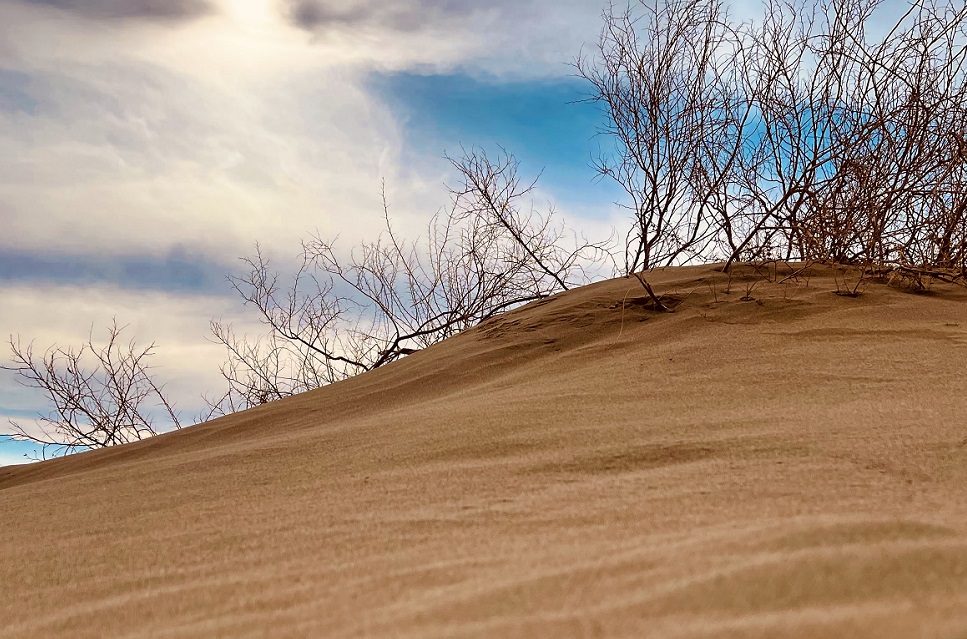Kazakh villages buried in the sand
In about 20 villages in the Aktjubinsk region, dunes even cover the light poles. Many have left, but there are also those who do not intend to abandon their homes and spend the day cleaning up the essential parts. Between late April and in November sandstorms are usual in this area, but this year they are particularly invasive and no protection seems sufficient.
Astana (AsiaNews) - In Kazakhstan's Aktjubinsk region, some 20 villages, such as Žyltyr, homes and all buildings have been buried by sand from the dunes, which even cover light poles and engulf everything, preventing people from leaving their homes for fear of ending up in sandstorms, so much so that residents have turned to local authorities for help.
In Žyltyr, the people, who gather about 100 families, live mainly on livestock and pastoralism, and now they cannot even grow a vegetable garden due to the sandy gusts of summer, made particularly dry by the drought of the past few months.
Southeast of the village are a few fields of buckwheat and other wild grasses, bordered by barbed wire to distinguish the owners, such as Ramazan and Uays, who told Radio Azattyk of their plight.
They are the two who have sent appeals to the regional administration, collected funds from residents to fix some protections on the fields, and tried to find the areas where they still manage to grow something.
The shrubs that are barely able to grow, and to which animals cannot gain access, could provide a minimal defense against the advancing quicksand. All village life tries to organize itself on the side where the wind does not blow, which comes mostly from the southeast.
Many have left, but there are those who do not intend to abandon their homes, such as Ermekbaj Akhetov, who lives at the far end of the southern part with his youngest son.
The sand bypasses even the protections, and continually encroaches on his camp, choking even the channelization well. Looking at the accumulated sand dunes around his home, Ermekbaj jokingly calls them "our Dubai."
Only the roofs of the houses are now visible from a distance, and it is not easy to walk on the unstable sands, for those who are not used to it. Shoes are not needed, because they immediately fill with sand, and one must walk only barefoot on the scorching sand, trying to shield eyes and ears from the sandy whirlwinds.
Akhetov warns not to "step on the larder," now completely hidden under the sand, distinguishing his own from that of the other villagers, especially the aksakal Maman, the elderly village chief who has also seen his stable, garage and summer cottage sink.
The day goes through the long process of clearing sand from the most necessary parts of the structures, carrying it away with buckets and wheelbarrows, at least to be able to get in and out of the house.
Family members and other neighbors are called in to help when one cannot manage on one's own, as another resident of Žyltyr, Ženis Mysyrova, recounts, for whom "basically all we do is carry the sand away, that's our only job."
Sandstorms in these parts are quite usual, beginning in late April and continuing through November, but this year they are particularly invasive, and no fence or protection seems sufficient to defend people and animals. People are tired of just talking and complaining about it, given also that few people listen to them.
"We have a saying, Ayta Ayta altajdy, Žamal apaj kartajdy" [Žamal-apaj has become old, always telling about the Altai], a way of saying that the same stories cannot be repeated over and over again, as Ženis explains. With great effort, his family managed to dig a well in the middle of a defensive wall, which seems to resist the sand at least a little.
Around the well, with a collection among all the inhabitants, about 200 saplings of grasses necessary for survival have been planted, and everyone prays that the shrubs will be able to take root.
To avoid wasting water, plastic bottles pierced in the bottom with nails have been placed under each stem, placed over the roots so that not a single drop is lost in the parched earth.
07/02/2019 17:28
11/08/2017 20:05







.png)










